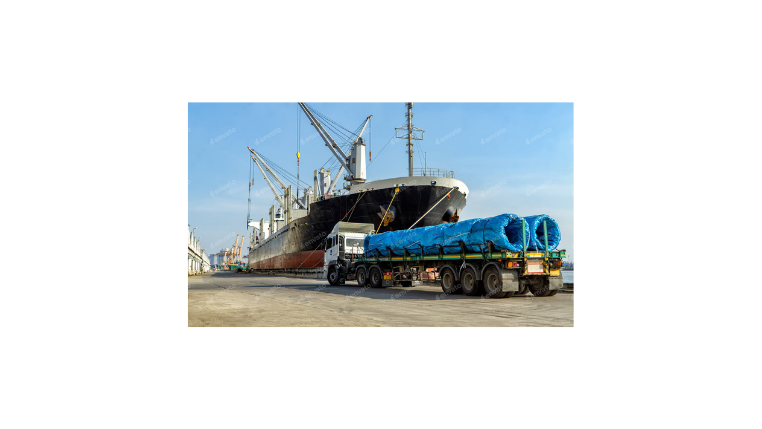Navigating the Dragon: How to Prepare Your Supply Chain for Chinese New Year
Every year, Chinese New Year (CNY) marks not only a vibrant cultural celebration but also the single largest and most predictable disruption to global supply chains. For weeks, factories and businesses across China shut down, halting production and creating a ripple effect that impacts logistics worldwide. This blog explores the profound effects of the holiday season on shipping—from pre-holiday freight surges to post-holiday production delays—and provides a strategic guide for businesses to navigate this challenging period. With early preparation, clear communication, and smart logistics, you can protect your supply chain and ensure smooth operations.
Understanding the Chinese New Year Effect on Global Logistics
Chinese New Year, also known as the Lunar New Year or Spring Festival, is a multi-week event. Unlike a one-day national holiday, the entire country effectively pauses for at least two weeks, and the impact on manufacturing and shipping extends for a much longer period. This creates three distinct phases of disruption:
- The Pre-CNY Rush: In the 3-4 weeks leading up to the holiday, factories work overtime to produce and ship as many orders as possible before closing. This creates a massive surge in demand for space on container ships and cargo planes, leading to port congestion, equipment shortages, and skyrocketing freight rates.
- The CNY Shutdown: During the official holiday period, production comes to a complete standstill. Factories, logistics companies, ports, and customs offices operate with minimal to no staff. Essentially, for about two weeks, nothing gets made and very little gets moved.
- The Post-CNY Ramp-Up: Production does not simply resume at full capacity the day after the holiday. It can take several weeks for factories to get back to normal output. Many workers use this time to switch jobs, leading to labor shortages and a slower-than-expected restart.
Predictable Disruptions: Key Challenges for Businesses
The CNY effect creates several predictable challenges that businesses must anticipate:
- Extended Production Lead Times: Your standard 30-day lead time can easily become 60 days or more when factoring in the pre-holiday rush and the post-holiday ramp-up.
- Freight Capacity Crunch and Soaring Rates: The pre-holiday cargo rush means securing space on a vessel becomes extremely competitive and expensive. Businesses that don't book early may face rolled cargo (shipments being bumped to a later sailing).
- Port and Terminal Congestion: Ports and terminals in China and key destinations like the US and Europe become heavily congested, leading to delays in loading and unloading cargo.
- Potential Quality Control Issues: In the frantic rush to complete orders before the shutdown, there is an increased risk of production errors and a decline in product quality.
- Communication Blackouts: During the holiday, it can be nearly impossible to reach your suppliers or get updates on your orders.
A Strategic Playbook: How to Mitigate CNY Disruptions
Chinese New Year is not an unforeseeable crisis; it is a known variable. A proactive and strategic approach can minimize its impact on your business.
1. Plan and Forecast Months in Advance
This is the golden rule. Effective CNY planning should begin in Q3 or early Q4 of the preceding year. Work with your sales and operations teams to create a detailed forecast of the inventory you will need to cover the entire first quarter.
2. Build a Strategic Inventory Buffer
Place orders with your suppliers well in advance and build up your inventory before the holiday begins. This safety stock will ensure you can continue to meet customer demand even when your production lines in China are silent.
3. Communicate Extensively with Suppliers and Partners
Talk to your Chinese suppliers early to understand their exact holiday closure dates and their planned production schedule for your orders. Get firm deadlines for when they need your final orders to guarantee pre-holiday shipment.
4. Book Freight Capacity Early with Your Freight Forwarder
Collaborate closely with your freight forwarder. They are your eyes and ears on the ground and have invaluable insights into market conditions. Book your ocean or air freight capacity at least 4-6 weeks in advance of your desired shipping date to avoid exorbitant rates and the risk of rolled cargo.
5. Consider Supplier Diversification
While not a short-term fix, the annual CNY disruption highlights the risk of single-sourcing from one country. Use this as an opportunity to explore sourcing options in other regions (e.g., Southeast Asia, Mexico) to build a more resilient and balanced global supply chain for the long term.
Conclusion
In conclusion, Chinese New Year doesn't have to be a period of chaos for your business. By treating it as a predictable and manageable event, you can implement a strategy that turns a potential vulnerability into a demonstration of your company's logistical prowess. Success hinges on foresight, communication, and strong partnerships. Modern logistics platforms like Modaltrans are essential for this kind of strategic planning, providing the end-to-end visibility needed to manage inventory, track critical shipments, and collaborate with suppliers and forwarders from a single, centralized dashboard.










